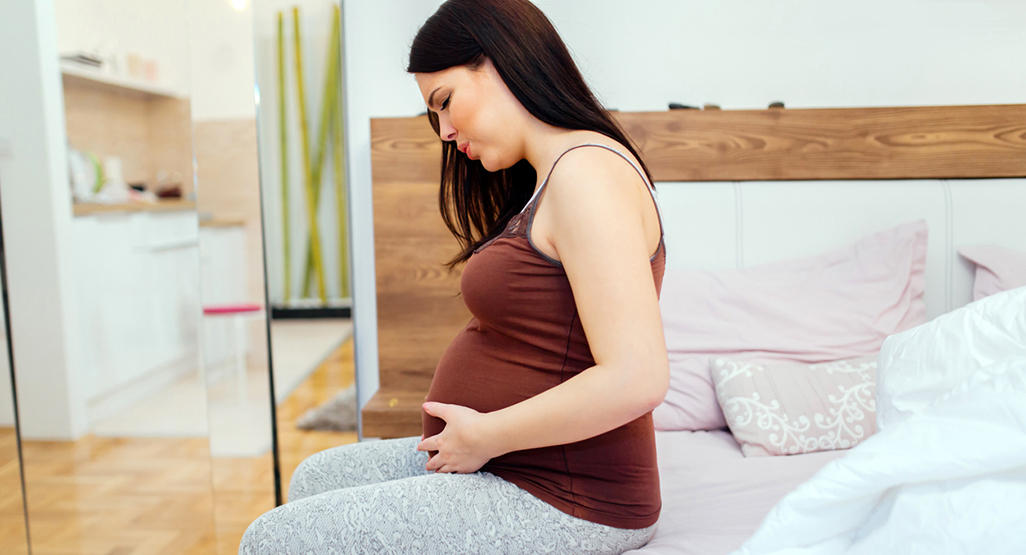Your body changes in many, many ways during pregnancy. One of the most common things that women experience during pregnancy is an increase in pregnancy pressure. This happens because the baby’s head presses directly on the pelvic floor muscles as your pregnancy progresses. This pressure can be uncomfortable and even painful, not to mention lead to issues such as bladder leakage. Here are nine things that you can do to relieve pelvic pressure during pregnancy:
1. Work out in water
Working out in water is fantastic for you because the water will cradle your growing belly so that your body doesn’t have to support it. While it’s certainly a great idea to do water aerobics to stay fit and healthy during your pregnancy, you can also take some time to aimlessly paddle around in the pool and enjoy the fact that gravity no longer has a hold on you. This will give your body (especially your pelvis) a break and help your muscles relax to relieve some of that pressure.
2. Strengthen your pelvic muscles
Holding up a growing baby is a lot of work, and your pelvic muscles might not be ready for it. This can lead to a feeling of pressure and/or pain, especially as the baby grows and your pelvic floor has to hold up more weight. If your doctor suspects that your pelvic floor muscles are weak, they will likely recommend that you do pelvic floor exercises such as Kegels and pelvic tilts. Not only can these exercises help relieve pelvic pressure during pregnancy, but they can also help you recover faster after you give birth and help address things such as postpartum incontinence.
3. Relax your body
On the other hand, your pelvic pressure might be the result of muscles that are too tight instead of too weak. In this situation, relaxing your pelvic muscles can help relieve the pressure and pain. A soak in a hot bath is an excellent idea that is accessible to anyone with a bathtub. You might also benefit from seeing a chiropractor who is experienced in working with pregnant women or getting a pregnancy massage from a qualified masseuse. These experts will know how to target your sore muscles and help relieve your pain.
4. Sleep with a special pillow
Your weight distribution changes during pregnancy, which means that your go-to sleep position might become profoundly uncomfortable and increase the pressure on your pelvis. Whether it’s a small contoured knee pillow or one of the 360-degree support pillows, getting a supportive pillow can make a huge difference in your comfort while sleeping. The difference will be most pronounced in your last trimester, but it’s worth getting a pillow as soon as your belly is large enough to affect your sleep so the discomfort doesn’t accumulate over months.
5. Try pregnancy support garments
In your third trimester, wearing a pregnancy belly band can help relieve pressure on your pelvis and support your lower back. If you’re not quite to the point where you need a belly band yet, you might find maternity support garments more beneficial. These garments look a bit like shapewear but are designed to accommodate a growing belly and provide gentle support thanks to their strong fabric.
6. Wear supportive shoes
Once you start showing, it’s time to put away your heels and embrace comfortable, supportive shoes like sneakers. Wearing uncomfortable shoes can cause the pain to radiate all the way up to your pelvis. They can also throw off your balance, making it even harder to walk during your later trimesters. Note that your feet often swell during pregnancy, so you might need to buy a larger size than you would normally in order to accommodate for this and get the most comfortable fit.
7. Figure out your triggers
Most moms-to-be have certain triggers for pelvic pain, whether that’s sleeping in a certain position or doing a certain type of exercise. If you don’t already know what causes your pelvic pressure, then we recommend keeping a symptom journal to help you track when your pain happens and what might potentially be causing it. Once you identify what your triggers are, you can work to avoid them in your everyday life.
8. Don’t push through the pain
Discomfort is, unfortunately, a part of pregnancy, but that doesn’t mean that you have to push through the pain. If you feel sharp or acute pain, immediately stop whatever you are doing, even if it’s a pelvic exercise that the doctor prescribed. Pushing through the pain can cause you to strain a muscle — or worse — which will only increase your pain further. If the pain recurs, talk to your doctor about what’s causing it so you can discuss potential treatments.
9. See your doctor when necessary
We just want to reiterate that you should absolutely see your doctor if you are experiencing abnormal pressure or pain during pregnancy, whether that’s in your pelvic area or somewhere else. Your doctor can help you with everything from discussing the proper form for pelvic exercises to discussing treatment options for pregnancy incontinence, such as bladder control products. During pregnancy, it’s all better safe than sorry, so don’t be afraid to reach out to your OBGYN.
Pelvic pressure is part of pregnancy, but that doesn’t mean that you have to take it lying down (or standing up, as the case may be). Get relief from pelvic pain during pregnancy with these nine tips. We wish you a smooth pregnancy and easy delivery!
